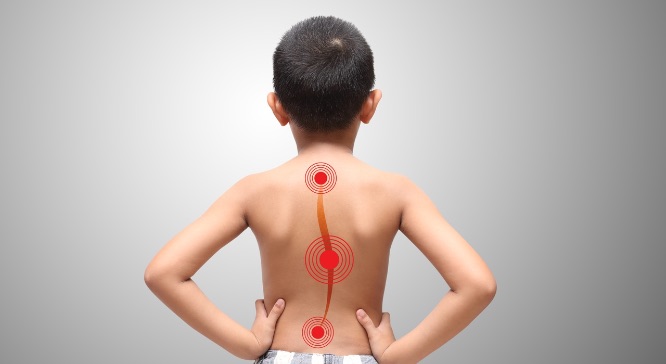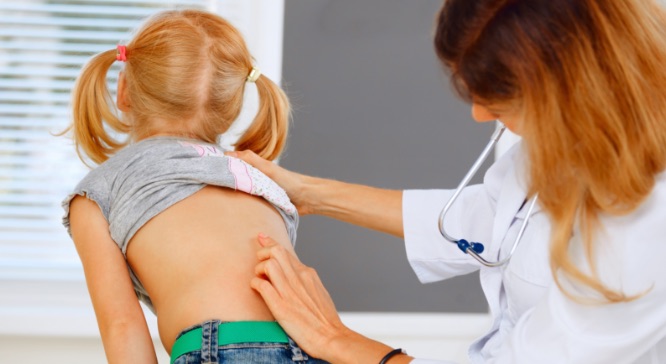Chiropractor
Chiropractic is an independent branch of western medicine where practicing doctors can provide patients with a diagnosis, perform treatments and, if needed, refer patients to other specialists. In the US and Canada, similar to western doctors, chiropractors serve as primary care physicians and can issue medical leave certificates. In Hong Hong, there are no recognized chiropractic institutions as of yet, and the majority of chiropractors in Hong Kong received their education and training in Australia, Canada or in the United States, where the origin of chiropractic was founded.
Enrollment into a chiropractic educational program in the United States or Canada requires completing a four-year pre-medical bachelor degree with first class honours, followed by undertaking a four-year Doctor of Chiropractic program comprising the study of general medicine, chiropractic diagnosis and treatment, human biomechanics, imaging diagnosis courses, etc. As a prerequisite, a one-year hospital-based clinical internship and the passing of the certification exam after successful completion of the program is required to be licensed to practice.
Doctors will evaluate a patient’s condition by assessing their medical history and identifying underlying symptoms. A physical examination will be carried out on patients to perform a series of exercises to determine their range of motion, test their flexibility and to understand what type of movements are causing the pain. A neurological exam maybe performed to test muscle strength, reaction and coordination of the patient. Doctors may also confirm their diagnosis with an x-ray, bone scan, MRI, blood or urine tests and perform treatments with unique techniques for spinal correction, 3D spinal traction, ultrasound or shockwave therapy. Patients will also be taught stretching exercises and maintaining correct posture for everyday activities to help prevent relapses of the chronic pain.

Student Health
What is Scoliosis?
Scoliosis refers to the sideways curvature of the spine in “S”- or “C”-shape. It occurs more often during adolescent, where the rate of spinal deterioration in girls progresses more rapidly than that in boys. Scoliosis patients are classified depending on the degree of their back curvature, as mild, moderate and severe. Mild patients need only periodic monitoring by a doctor who will supervise any changing conditions of scoliosis and receive conservative treatments such as physical therapy and spinal correction. Moderate and severe cases will need to wear a scoliosis frame or may require surgical intervention.
What are the causes of Scoliosis?
The causes of scoliosis can be divided into four categories:
Idiopathic Scoliosis - More than 80% of students are classified in this category due to an underdeveloped spine. The causes are still unknown although the medical community believes that it is related to genetics.
Congenital Scoliosis - A congenital spinal deformity at birth.
Neuromuscular Scoliosis - Caused by the abnormalities of supporting spinal muscles and nerves, patients can be diagnosed as having Cerebral Palsy or Spina Bifida.
Others - Patients who have leg length discrepancy or Marfan syndrome.
How is the degree of Scoliosis classified?
To assess the severity of scoliosis, doctor’s will calculate the angle of the scoliosis (known as Cobb's angle) from an X-ray:
10 degrees and above: Diagnosis confirmed10-20 degrees: Mild Scoliosis20-40 degrees: Moderate Scoliosis40 degrees above: Severe ScoliosisWhat are the symptoms of Scoliosis?
It is hard to detect for scoliosis in the early pre-diagnosis stages, as students would not experience any pain. Parents can however take note of the following symptoms:
If you discover your child has any of the above symptoms, please consult a doctor as soon as possible for examination.
How does Scoliosis affect students?
Not only does scoliosis affect one's appearance it also causes back pain problems and stiff joints. In more severe cases, patients’ sternum would be abnormally deformed causing compression on the chest and the heart, which further may affect the cardiovascular system. If scoliosis occurs in the lumbar spine, degeneration may occur quickly, producing bone spurs. If the bone spurs press against the nerves of the spinal cord, it may weaken a patient’s legs and lead to incontinence (overactive bladder) if serious.
How to cure Scoliosis?
Mild patients (below 20 degrees):
Perform regular spinal examinations (usually every six months) to observe the changes in scoliosis and receive physical therapy or spinal correction to learning proper back movements for strengthening back muscles.
Moderate patients (20-40 degrees):
Need to wear a scoliosis brace and continue with regular spinal examinations for follow-up of the condition and receive physical therapy or spinal correction.
Severe patients (40 degrees above):
Must go to the orthopedics department to undergo scoliosis surgery for correcting the spine and preventing its deterioration.
The operation involves implanting titanium screws and rods into the patient’s spine. The rods will be elongated according to a child’s growth rate in order to correct the spine and allow it to grow continuously. Since children are undergoing the developmental stage of growth, this operation has caused patient’s to suffer severely.
In recent years, Hong Kong has introduced a procedure to magnetically drive growing rods into the spine. Doctors will implant a growth rod using a built-in magnet motor into the patient's spine and use an external magnet to drive it about every other month so to extend the rod. The spine can be corrected without affecting the development of the child.
How to prevent Scoliosis?
Parents can teach their children the importance of maintaining correct postures from an early age and encourage them to have the habit of regular and moderate exercise in order to strengthen their muscles and increase bone density. Parents should still observe if their child has any of the above symptoms of scoliosis or not. If in doubt, always consult your child’s doctor. In addition, children should visit the student health service centre under the Department of Health for a general medical examination every year.

What is Kyphosis?
Kyphosis refers to a state in which the upper back protrudes backwards forming a semicircle. School-aged children with kyphosis are usually not aware of the symptoms as they are accustomed to leaning their head, shoulder and body forward while standing, walking or sitting down. Parents or teachers generally do not notice until a child’s appearance has changed significantly which means the condition has become serious.
What are the causes of the Kyphosis?
The causes of kyphosis in school-aged children are mainly related to lifestyle habits. For example, students nowadays are used to slouching their heads when using their smartphones or when playing on portable game consoles or laptop computers. They maintain poor postures when carrying heavy school bags and overall lack proper exercise.
What effect does Kyphosis have on schoolchildren?
Not only does Kyphosis affect the appearance of a child but also forms a habit of leaning the head, shoulders and body forward causing prolong pulling of the back muscles, muscle fatigue and soreness of the neck, shoulders and waist.
How to prevent Kyphosis?
Most school children suffer from kyphosis due to improper posture and habits, that can definitely be prevented by:
Maintaining a good posture while standing, sitting or walking and keeping the neck and back straight;While doing homework or using a computer, etc., take a break every half-hour to do stretching exercises so to relax the muscles;Exercise muscles, increase endurance and bone density by doing some form of aerobic exercises at least 3 times-a-week such as swimming, ball sports, running, etc.; and,In terms of school bags, a backpack made from lighter materials is preferred. Wider shoulder straps with sufficient cushioning inside is necessary to evenly distribute the pressure of the schoolbag on both sides of the shoulder and the weight of a school bag should not exceed 10% of the weight of the child.
Spinal health self-tests
Test oneAsk the child to bend forward with knees straighten and their hands should hang towards their toes. Parents can observe behind their child's back to see if the sides of their back are symmetrical. This test can quickly assess whether the child has symptoms of scoliosis or not. If in doubt, please consult child’s doctor for early treatment.Test two
Ask the child to stand against a wall. A correct posture only allows a small gap (about thickness of one palm) between the neck fossa, the waist and the wall. If the gap is too small or too large, it may mean that the child has kyphosis.

Surface Electromyography (SEMG)
What is Surface Electromyography (SEMG)
SEMG stands for Surface Electromyography, which is an advanced medical examination equipment used by doctors to measure the electrical activity of muscle contraction. The principle of this technology is similar to the one of electrocardiogram, which measures the electrical activity of the heart muscle. The data of electrical activity can present the condition of muscle tension and allows the doctor to assess the spinal health effectively.
How is the examination carried out? What is the principle?
The patient needs to relax their muscles during the examination so that the doctor can place a special scanner on the spine. As the spinal muscles of the human body are connected to the spine, if the patient's muscles are tight (usually means an inflamed, painful area), the amount of electricity released by the muscles as sensed by the SEMG scanner will increase accordingly. That means the pain the patient experiences maybe due to the damage of their spine or muscles and further treatment will be required in due course.
Is SEMG safe? Does it affect the body?
During examination, the SEMG scanner will be placed on the spine for about 10-15 minutes. The data of your spinal health will be displayed in charts. Unlike traditional X-rays, SEMG is radiation-free and does not cause any side effects, harm or pain to patients. This is a safe and reliable test suitable for anyone including children, seniors and pregnant women.
How to interpret the results of SEMG?
The arrow on a SMEG reports if the muscles on the both sides of the spine are tightly balanced, while the color references indicates the tightness of muscles as follows:
Red: Severe
Pink / Purple: High
Green: Normal
Yellow: Low/ muscle fatigue
To make an appointment for an SEMG computerized spinal examination, please contact our clinic on +852 2723-9622.
healthy office maintenance & knowing your joints
Read More
